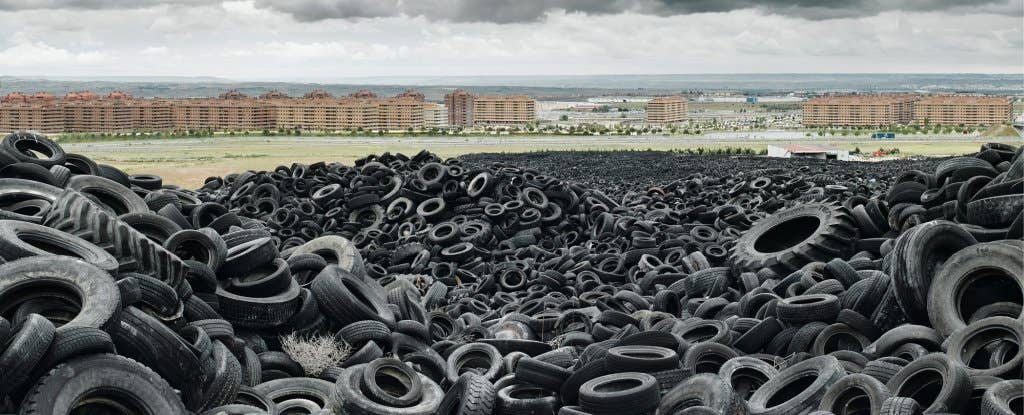Engineers Have Found a Way to Make More Durable Roads Out of Old Tyres And Rubble
Producing something useful out of waste materials that would otherwise be discarded is the ideal scenario

[Aug. 2, 2020: ScienceAlert]
Producing something useful out of waste materials that would otherwise be discarded is the ideal scenario when it comes to sustainable recycling. One place where we could put old tyres? Literally on the surface of the road.
Using a blend of old tyres and rubble left over from construction projects, a newly developed material has been found to be able to take the pressures of traffic. It's actually more flexible than standard road materials, and thus less likely to crack.
The mix of recycled concrete aggregate (RCA) and tyre crumbs is suitable for use as a base layer, beneath the asphalt laid on top. RCA is already used in this way, but the addition of pieces of tyre makes it even better able to cope with the elements.
"Traditional road bases are made of unsustainable virgin materials – quarried rock and natural sand," says civil engineer Mohammad Saberian Boroujeni from RMIT University in Australia.
"Our blended material is a 100 percent recycled alternative that offers a new way to reuse tyre and building waste, while performing strongly on key criteria like flexibility, strength, and permanent deformation."
Machines specifically designed to simulate the strains of a lifetime of passing vehicles were used to test different mixes of RCA, coarse tyre crumbs, and fine tyre crumbs.
Like these kind of stories? Get The Brighter Side of News' newsletter.
Ultimately the researchers decided that 0.5 percent fine crumb rubber to 99.5 percent RCA was the sweet spot, maintaining the necessary strength whilst also keeping the two materials cohesive. Too much rubber, and the strength of the material started to decline.
The sooner we can put stuff like this to good use, the better – the study authors note that 1 billion scrap tyres are produced annually across the world, while construction, renovation and demolition waste accounts for half of the global waste total each year.
"As we push towards a circular economy that can eliminate waste and support the continual use of resources, our recycled blend is the right choice for better roads and a better environment," says Boroujeni.
Waste tyres are usually dispatched to landfill sites or incinerated, releasing more CO2 into the air (something we really can't afford to happen) and leading to chemicals leaching into the environment and affecting human health.
The good news is that the situation is being addressed: a greater proportion of tyres are now being recycled in a variety of ways, at least in some parts of the world, and very often in creating construction materials (as is the case with this study)..... Read More
Joseph Shavit
Head Science News Writer | Communicating Innovation & Discovery
Based in Los Angeles, Joseph Shavit is an accomplished science journalist, head science news writer and co-founder at The Brighter Side of News, where he translates cutting-edge discoveries into compelling stories for a broad audience. With a strong background spanning science, business, product management, media leadership, and entrepreneurship, Joseph brings a unique perspective to science communication. His expertise allows him to uncover the intersection of technological advancements and market potential, shedding light on how groundbreaking research evolves into transformative products and industries.
